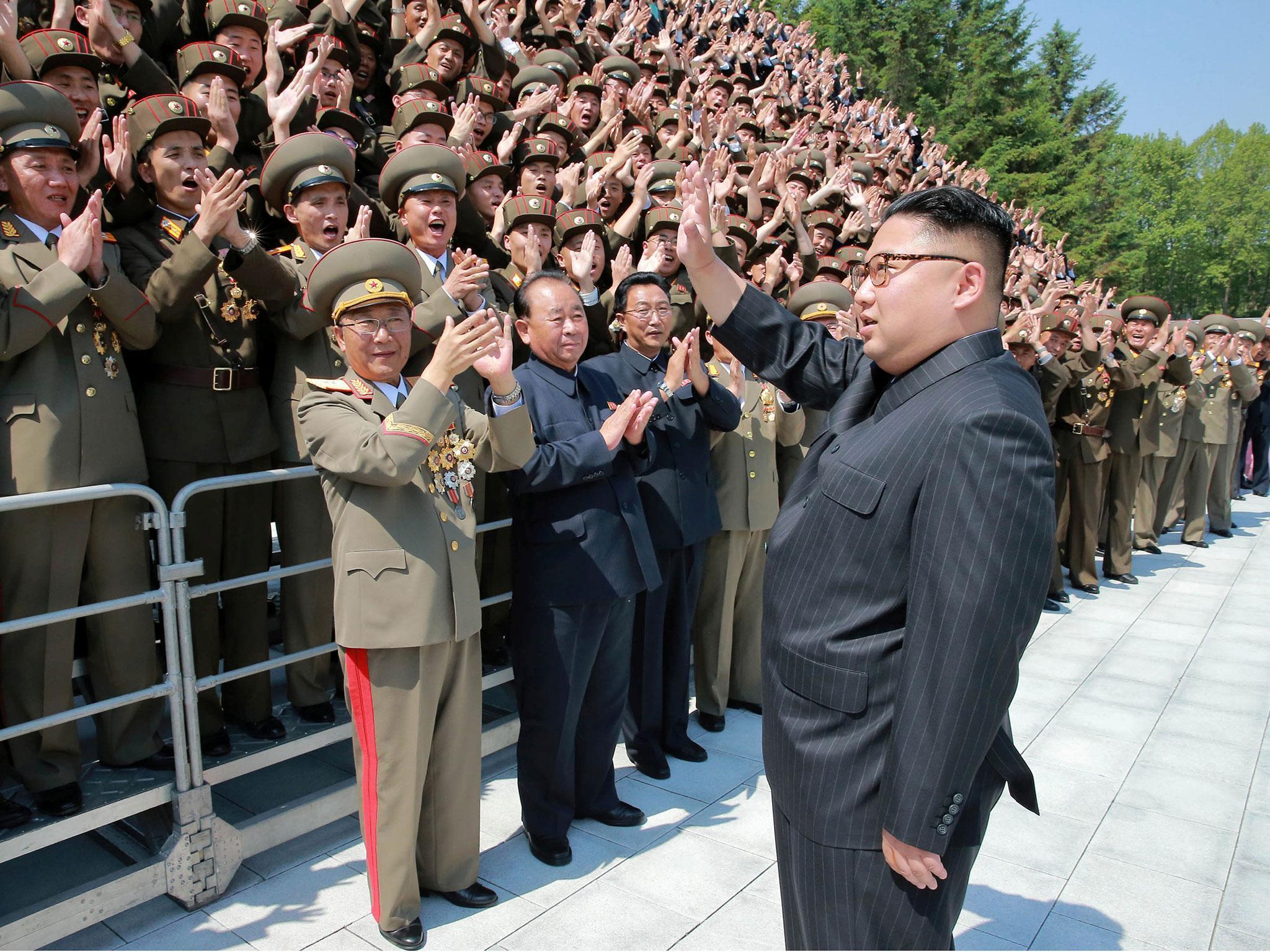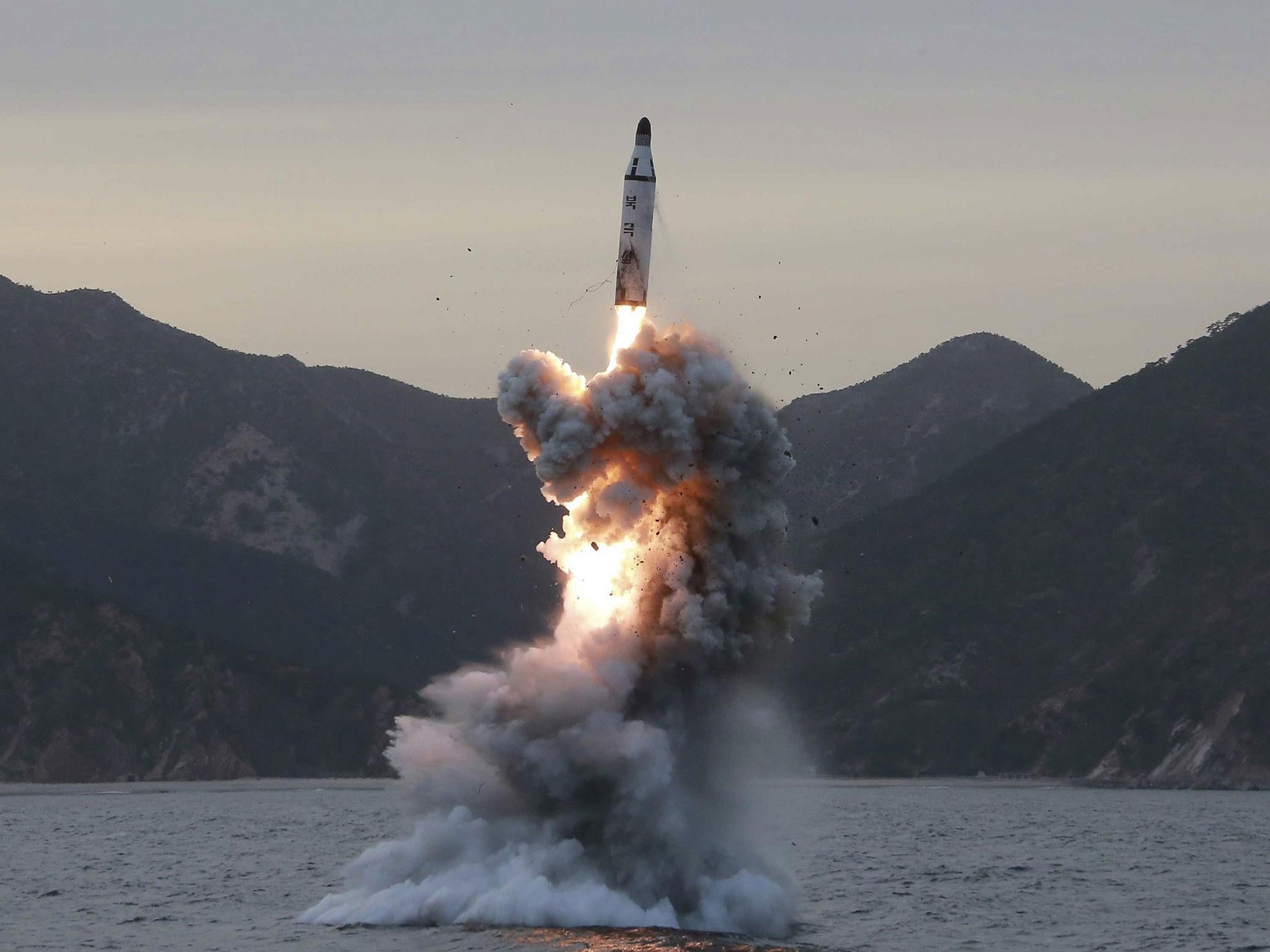North Korea fires medium-range ballistic missile in latest weapons test
Launch comes after North warns it 'has all kinds of powerful means for annihilating retaliatory strike'

North Korea has fired a medium-range ballistic missile in its latest missile test, US and South Korean officials have said, as the country speeds up its development of nuclear weapons and missiles.
The rocket was fired from a location near Pukchang, north of Pyongyang, reaching an altitude of 350 miles and flying about 310 miles eastward, the South's military said. It was launched from the same area where the North attempted to test-launch another missile last month but failed.
White House officials travelling in Saudi Arabia with President Donald Trump said the system, last tested in February, has a shorter range than the missiles launched in North Korea's most recent tests.
"We are aware that North Korea launched an MRBM (medium-range ballistic missile). This system, last tested in February, has a shorter range than the missiles launched in North Korea's three most recent tests," a White House official said.
US Secretary of State Rex Tillerson said both economic and diplomatic pressure will continue to be applied to North Korea. "The ongoing testing is disappointing, disturbing and we ask that they cease that," he said in an interview with Fox News Sunday.
"South Korea and the United States are closely analysing the launch for further information," South Korea's joint chiefs of staff said in a statement. "Our military is closely monitoring the North Korean military for any further provocation and maintaining readiness to respond."

In February, North Korea used a launcher truck to fire a midrange solid-fuel missile it calls the Pukguksong-2 (Polaris-2), a land-based version of a submarine-launched missile the country revealed earlier. That missile travelled about 310 miles before crashing into the sea, according to South Korean and US officials.
The February launch, the North's first missile test after Mr Trump took office, alarmed neighbours because solid-fuel missiles can be fired more quickly than liquid-fuel missiles, which need to be fuelled before launch and require a larger number of vehicles, including fuel trucks, which could be spotted by satellites.
South Korean President Moon Jae-in held a National Security Council meeting at the presidential Blue House to discuss the missile launch, Mr Moon's office said.
Japan strongly protested to North Korea about the launch as Tokyo cannot tolerate its repeated acts of provocation, chief cabinet secretary Yoshihide Suga told a news conference.
Mr Suga said the missile was launched from North Korea's west coast towards the Sea of Japan and it likely landed outside Japan's exclusive economic zone, without causing damage to ships or aeroplanes.
Prime Minister Shinzo Abe said he wants to raise the issue of North Korean missile launches at the G7 summit in Italy. "I would like to have a thorough discussion about this at the G7 summit," Mr Abe told reporters after a meeting of the National Security Council.
The launch comes a week after the North successfully tested a new midrange missile experts say may one day be capable of reaching Alaska or Hawaii. The long-range ballistic missile named Hwasong-12 (Mars-12) flew about 500 miles and reached a height of 1,240 miles during its half-hour flight.
The North said it was capable of carrying a "large-scale heavy nuclear warhead". "Today the US mainland and the Pacific operational theatre are within the strike range of the DPRK and the DPRK has all kinds of powerful means for annihilating retaliatory strike," North Korea's state KCNA news agency said in a commentary on Saturday.
North Korea has defied all calls to rein in its nuclear and missile programmes, even from China, its lone major ally, calling them legitimate self-defence.
Earlier in the week South Korean President Moon Jae-in said there was a "high possibility" of war with North Korea.
North Korea conducted two nuclear tests last year alone, possibly improving its knowledge on making nuclear weapons small enough to fit on long-range missiles. The country has also conducted a slew of rocket launches as it continues to advance its arsenal of ballistic weapons, which also include midrange solid-fuel missiles that could be fired from land mobile launchers or submarines.
Such tests present a difficult challenge to Mr Moon, South Korea's new President, a liberal who took office on 10 May and has expressed a desire to reach out to North Korea.
Pyongyang's aggressive push to boost its weapons programme also makes it one of the most urgent foreign policy concerns for the Trump administration, though Washington has struggled to settle on a policy.
Additional reporting by agencies
Join our commenting forum
Join thought-provoking conversations, follow other Independent readers and see their replies
Comments